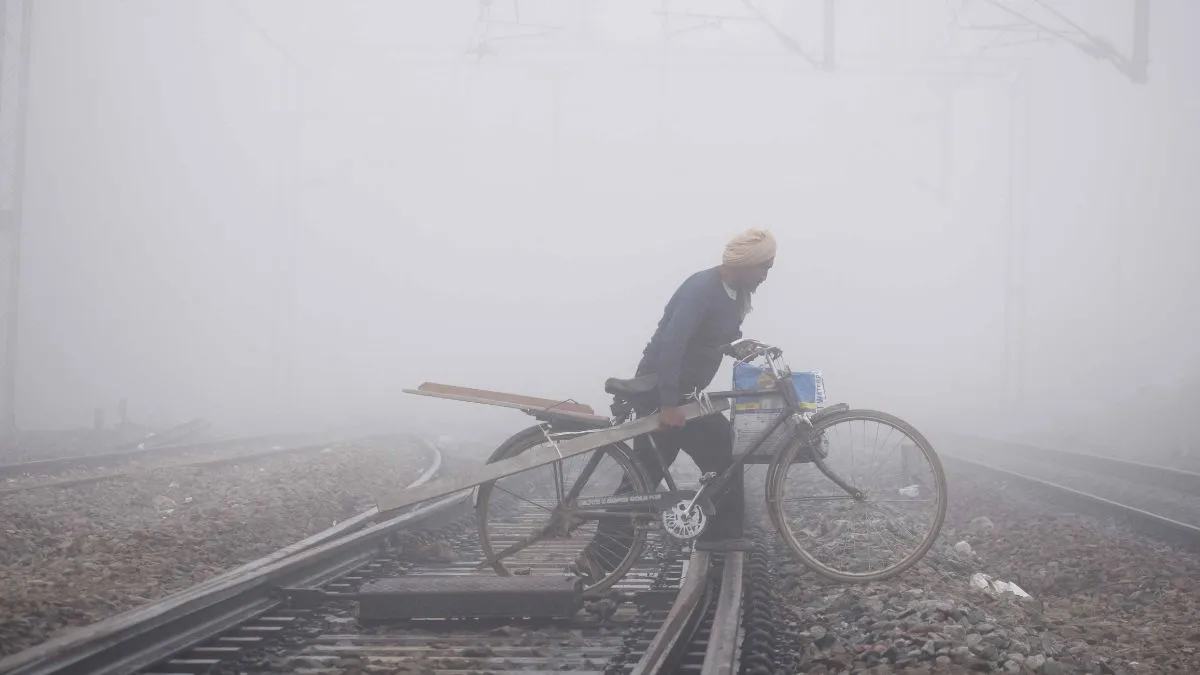- By Priyanka Koul
- Mon, 02 Dec 2024 09:14 AM (IST)
- Source:JND
Delhi AQI: The national capital continues to battle poor air quality, with a thick blanket of smog enveloping Delhi on Monday. The Air Quality Index (AQI) was recorded at 305, falling into the 'very poor' category, as per the Central Pollution Control Board (CPCB).
#WATCH | The Air Quality Index (AQI) remains in the 'Poor' category in Delhi as per the Central Pollution Control Board (CPCB).
— ANI (@ANI) December 2, 2024
(Visuals from Connaught Place) pic.twitter.com/ZHezwS9plx
Residents around iconic landmarks like India Gate are particularly feeling the impact. One local, who was out for an early morning run, shared their discomfort, saying, "Earlier, when we came to India Gate, we could easily see the Rashtrapati Bhavan, but now it's all hazy. We’re struggling to breathe, and there’s a burning sensation in our eyes." This comment highlights the growing concerns of Delhiites as the air quality continues to deteriorate.
#WATCH | "Earlier, when we used to come to India Gate, we could see Rashtrapati Bhavan but now nothing is visible. We are facing difficulties in breathing and there is a burning sensation in the eye..."says a local who came for an early morning run at India Gate https://t.co/xYZUSh45wE pic.twitter.com/BnafTwTWTM
— ANI (@ANI) December 2, 2024
Air Quality Remains in 'Very Poor' Category
A persistent layer of smog has covered various parts of Delhi, making the situation worse. According to the CPCB, the city's AQI is still classified as 'very poor,' which means health risks for even healthy individuals and serious effects for those with pre-existing conditions like asthma.
In response to this, the Supreme Court recently upheld the implementation of strict measures under the Graded Response Action Plan (GRAP) to combat the rising pollution levels. The court, however, asked the Commission for Air Quality Management (CAQM) to consider relaxing restrictions for schools and educational institutions. This is particularly important as many students are unable to attend classes, receive midday meals, or access air purifiers during this period.
Warm Winter Delays the Onset of Cold Weather
Adding to the confusion, this year’s winter has been slower to arrive. Despite being in December, Delhi's temperatures have remained unusually high. Even October and November saw warmer-than-usual temperatures, with the minimum temperature still above the normal range. The Indian Meteorological Department (IMD) has forecast that the city will begin to experience a more noticeable drop in temperature starting around December 11th or 12th, signaling the arrival of the colder winter season.
Also Read: BTS V Winter Style: 5 Cosy Fashion Tips To Borrow From Kim Taehyung's Closet
What Is Graded Response Action Plan?
To manage air pollution, the NCR (National Capital Region) has been divided into four stages under the Graded Response Action Plan (GRAP):
Stage I: Poor (AQI 201-300)
Stage II: Very Poor (AQI 301-400)
Stage III: Severe (AQI 401-450)
Stage IV: Severe Plus (AQI above 450)
#WATCH | Delhi: Thin layer of smog engulfs part of Akshardham area.
— ANI (@ANI) December 2, 2024
The Air Quality Index (AQI) is 'poor' in several parts of Delhi, according to the CPCB. pic.twitter.com/ilL0sntKcm
As Delhi struggles with high air pollution levels, residents and authorities continue to grapple with the consequences, hoping for a shift in weather conditions to bring some relief. However, immediate measures remain crucial to safeguard public health and improve air quality.

